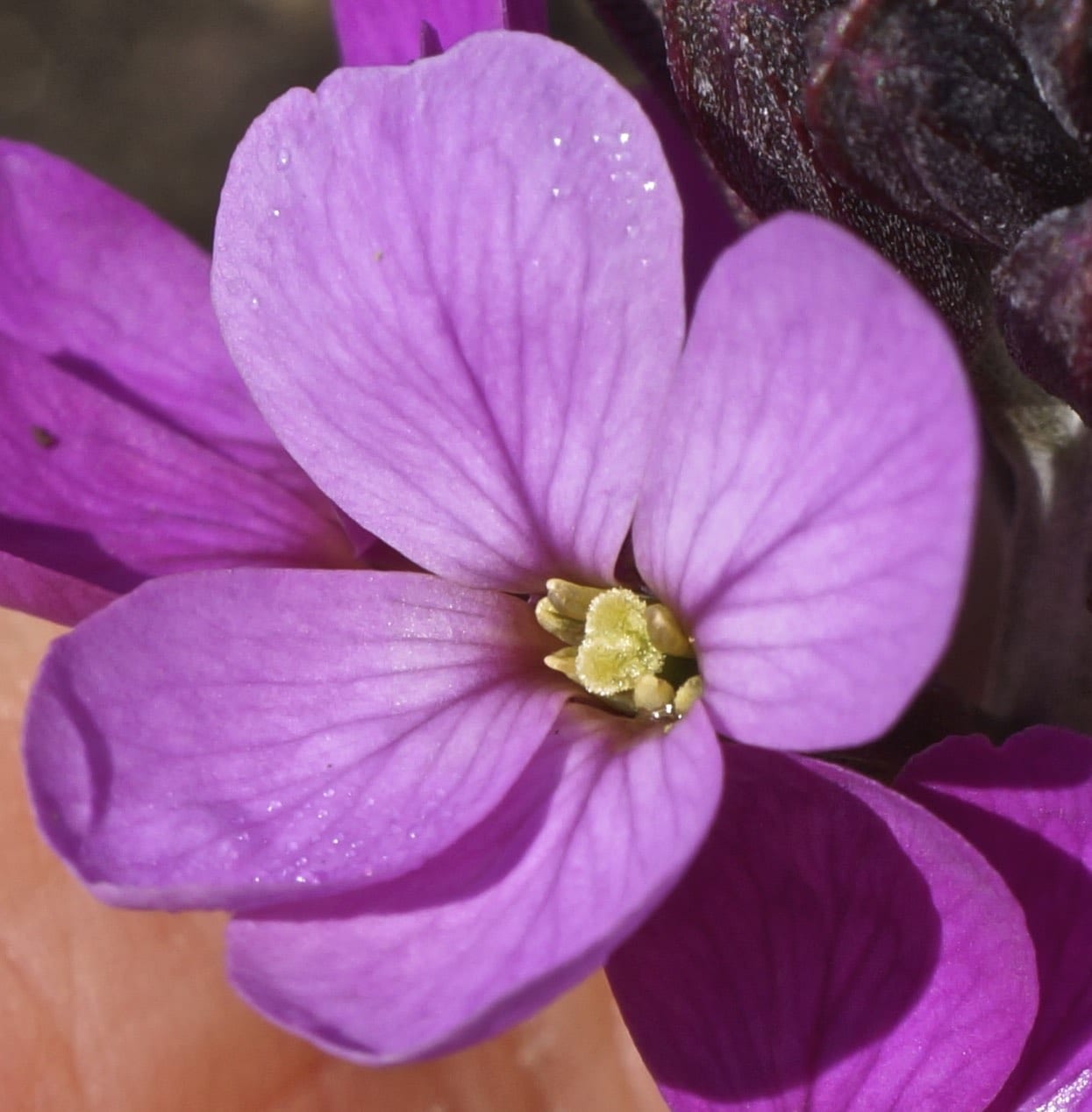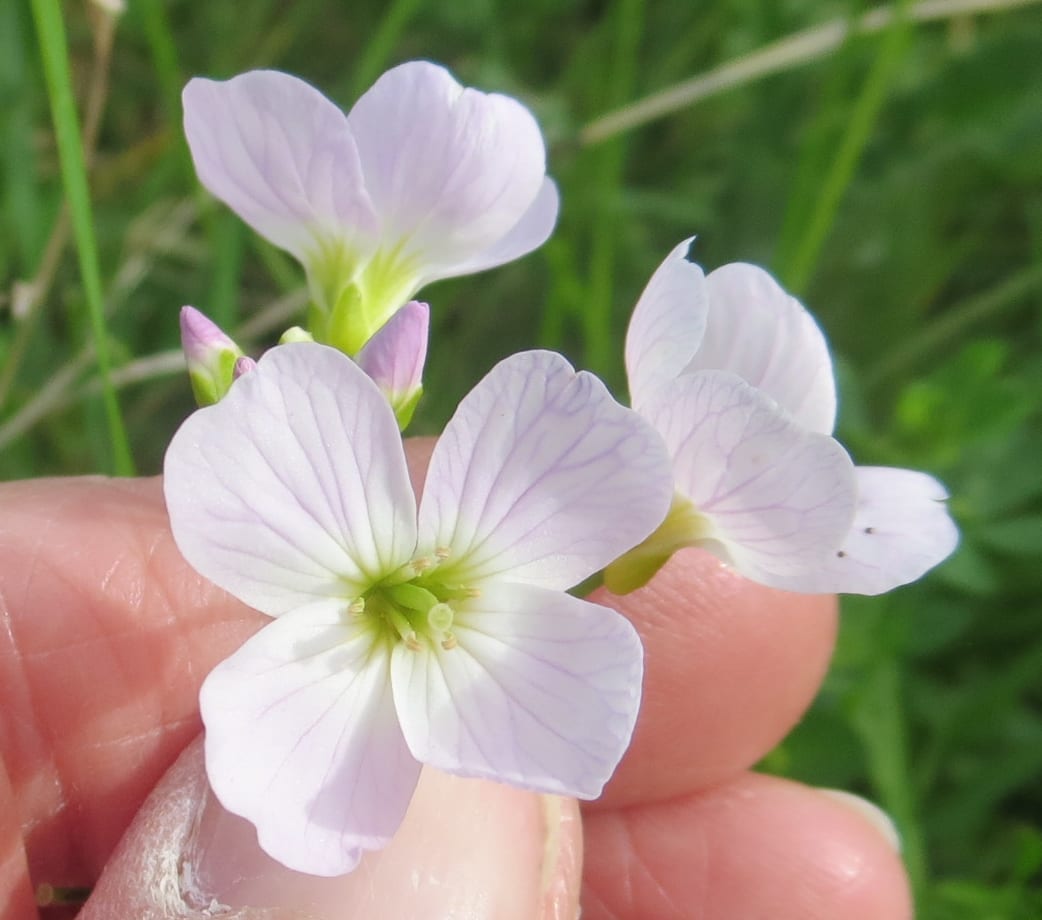Cabbage Family – Brassicaceae
The typical flower has 4 free petals in the form of a cross, hence the name Cruciferae. It is the only family to have 4 petals and 6 stamens – 2 short and 4 long. The long, thin green ovary of the Oilseed Rape can be seen behind the yellow stamens. It is topped by a white stigma. The fruit that is formed from the ovary is called a siliqua – a dry fruit that is 3 times as long as broad. It is characteristic of the Cabbage family. The siliqua is a pod-like capsule which splits open to release seeds. In Oil Seed Rape these are initially green but blue-black when ripe. They are very rich in oil. Basic Flower Parts – 4 Sepals, 4 free petals, 6 Stamen, 1 (short) Style
The Cabbage family, was originally given the name Cruciferae, but is now Brassicaceae. Brassica is the Latin name for Cabbage. It has 3000 species in 350 genera. The classification of the family into sub-families has proved problematic but the family can be split into Ornamental plants such as Wallflowers (erysimum or cheiranthus), Iberis, Aubrieta, Alyssum, Lunaria (honesty) and Matthiola (known as Stocks), Wildflowers such as Cardamine (Cuckoo Flower ) and Crop plants such as Cabbage, Cauliflower, Brussel Sprouts, Broccoli, Mustard, Turnip and Oilseed Rape. The fruit is in the form of seed pods (siliqua) which are characteristic of the family as in oilseed rape and white mustard.









